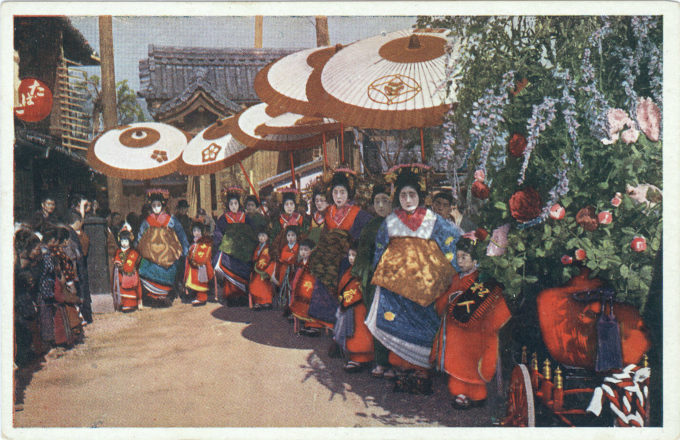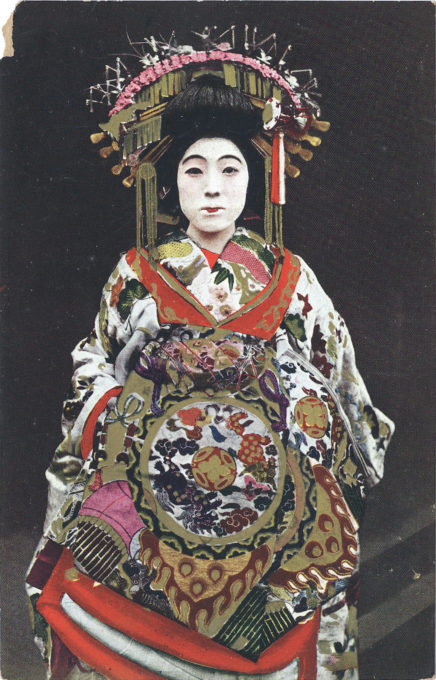See also:
Yoshiwara (Tokyo), c. 1910-1930.
Kamuro (attendant) at Yoshiwara, c. 1910.
“The procession, or promenade, of yūjo has been considered as, par excellence, the most splendid spectacle and important ceremony of the Yoshiwara.
“Once in the earlier years of Meiji, and once again in 1887, when the cherry-blossoms were in full bloom, this wonderful procession took place, but
since then no attempt has been made to revive the time honoured custom. Even on the two occasions referred to, the affair was not carried out in strict accordance with the ancient style, but in a far simpler fashion.“The best account of this process of yūjo ever written is given in Mr. Henry Norman’s, ‘The Real Japan’:
‘The most extraordinary spectacle of the Yoshiwara takes place for a few afternoons at five o’clock three times a year, when the flowers in the long street gardens are changed. First in spring comes the pink glory of the cherry-blossoms; then in summer the purple of the iris; then in autumn the hundred colours of the chrysanthemum, the national flower of Japan.
‘When the new flowers are planted the yūjo pay them a state visit. From each of the principal houses half a dozen of the most beautiful are chosen and arrayed in gorgeous clothes, their hair dressed monumentally, combs three feet long stuck in, from side to side, and then they are mounted upon black lacquered geta or pattens a foot high.’
“… Nowadays there is no fixed rule as to the dress of these women, and they dress themselves in accordance with the wishes of the brothel-keepers or according to the dictates their own taste. Thus we find some of the modern courtesans dressed in gold or silver embroidered brocades after the fashion of oiran of bygone days, others are clad in gaudy red crêpe (hi-jirimen) with embroidered collars, and wear gigantic satin sashes (obi) tied in front, while others again try and make themselves look younger and prettier by wearing yuzen stuff (generally silk crêpe decorated with various beautiful figures) purple satin collars and maki-obi (a narrow sash wound round and round the waist.”
– The Night City: Or the History of the Yoshiwara Yukwaku, by J.E. De Becker, 1905



